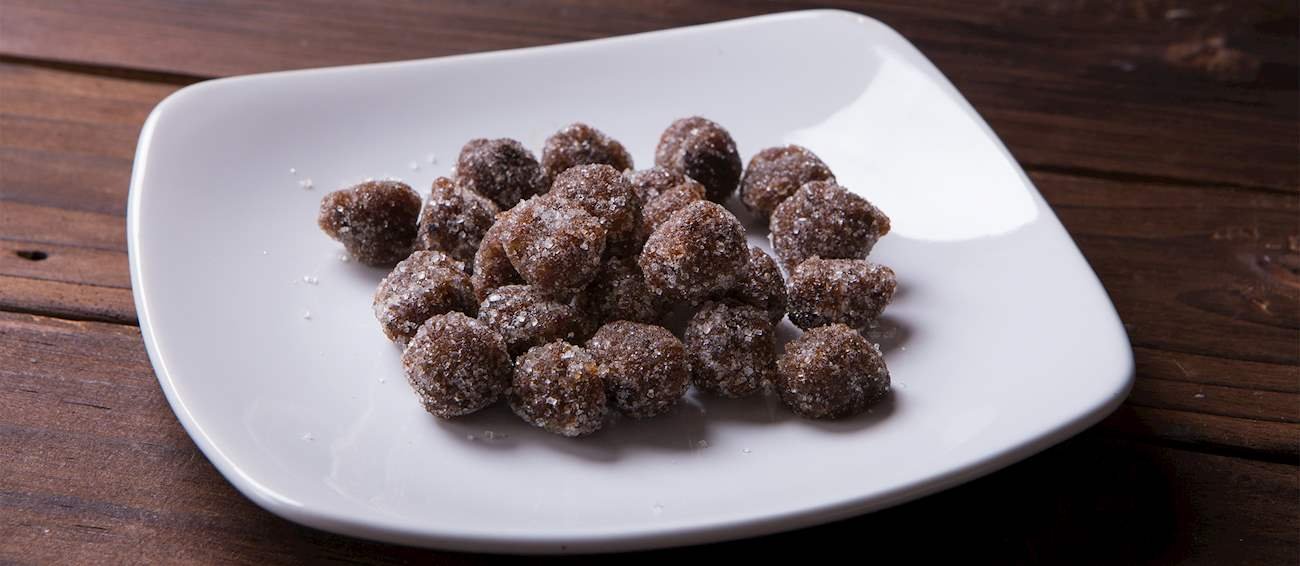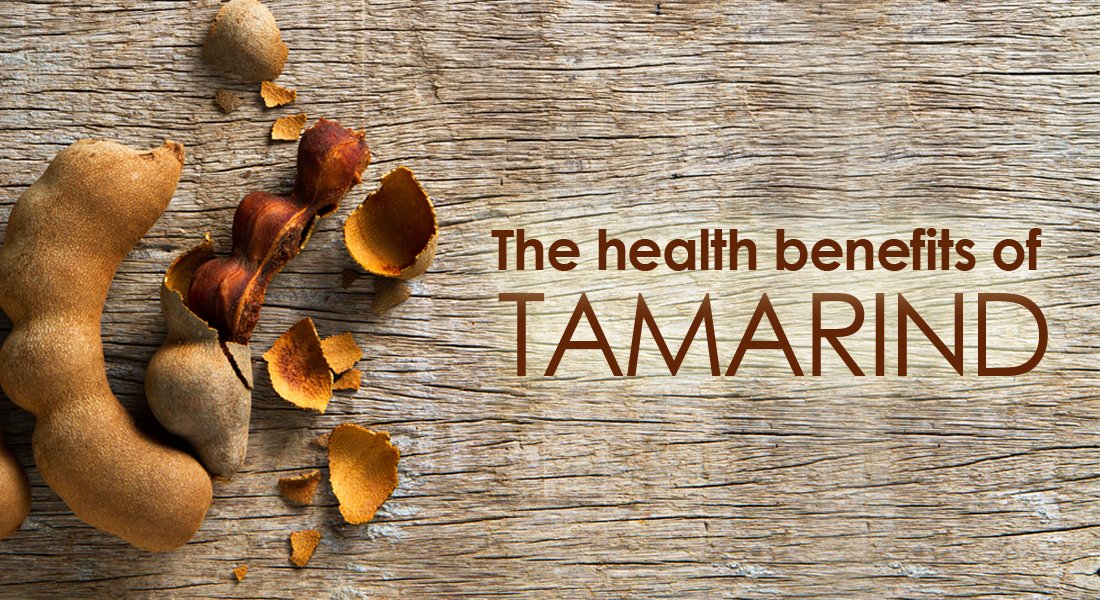What Is Tamarind Fruit?
Tamarind is a tropical fruit which grows in Africa, India, Pakistan and many other tropical regions.
The tamarind tree is large, spreading, and growing up to 20 meters in height. The flower is red-yellow in color and grow in clusters. You can eat the leaf as a vegetable or use in medicinally.
The tamarind fruit is around 6 inches in length and looks like a large, curved bean pod. Young tamarind fruit has a brown skin with the greenish insides. The fruit begins to ripen from February to March. As the fruit dries out, the pod becomes stiff and brittle, the insides become pasty and the seeds turn brown.
When slightly unripe, the pulp has a sour taste with a high level of acidity. When fully ripe, it has a pleasing sweet-sour flavor and is high in both acid and sugar.

Tamarind fruit is native of Africa and grows in many tropical regions (Photo: Internet)
Funny Things About Tamarind Fruit
- The name “tamarind” comes from Arabic “tamar hindi”, meaning “Indian date.”
- You can use the pulp, leaves, and bark in natural remedies.
- India is currently the largest producer country of tamarind.
- Tamarind tree is used as a bonsai in some Asia country.
- You can use the tamarind lumber to make furniture, carvings, and another small specialty wood items.

5 interesting facts about Tamarind (Photo: Tamarind)
How To Use Tamarind Fruit?
Tamarind is most popular to eat fresh, but it is also used in a variety of culinary dishes all over the world. You can use tamarind fruit in food, juice, and candy.
India – Local people cook the sour tamarind fruits with meat, fish, or rice.
Jamaica, The Dominican Republic, Cuba, India – They mix the tamarind pulp with sugar and rolling it into balls or patties.
The Bahamas – Unripe tamarind is roasted in coals until they burst open; the pulp is eaten hot. They also mix the pulp with water, sugar, and cloves.
Bahamas Brazil, Puerto Rico – tamarind syrup.
Costa Rica – tamarind jam
Thailand – used in many dishes.
Tamarind Balls

Tamarind balls (photo: Internet)
Ingredients:
+ 4 cups tamarind pulp
+ 1/2 cup boiling water
+ 1 tbsp baking soda
+ 1 tsp salt
+ 4 cups sugar
+ 1/2 tsp hot chili powder
Cooking:
+ Separate the tamarind into clumps.
+ Mix with baking soda and salt; after that pour boiling water on tamarind.
+ Mix until the water is absorbed and the seeds separate from the pulp.
+ Remove the seeds
+ Mix in 2 cups of sugar and the chili powder.
+ Cover and leave at room temperature for 12 hours
+ Shape into balls
+ Give the balls 2 hours to dry out
+ Roll balls in sugar
Tamarind Juice

Tamarind juice (Photo: Internet)
Ingredients:
+ 15 dried tamarind pods
+ 2 quarts water
+1 cup granulated sugar
Cooking
+ Boil water over high heat.
+ Separate the tamarind into clumps.
+ After the water comes to a rolling boil, place the tamarind and sugar in the water. Waits for about 1 hour and 30 minutes.
+ When the water cools down, squeeze out the hard tamarind seeds.
+ Places the water with tamarind in a blender and process until the pulp is fully blended into the water.
+ Run the liquid through a strainer and serve with ice.
HEALTH BENEFITS

Tamarind is tropical fruit with health benefits (Photo: Internet)
1.Prevents Atherosclerosis
The antioxidants, fiber, and potassium in tamarind juice help your heart in several ways. Hypercholesterolemic hamsters fed with tamarind fruit pulp showed reduction in total cholesterol, LDL cholesterol and triglyceride levels. This anti-cholesterol nature is significant in destroying fat plaques that build in the arteries and leads to atherosclerosis.
2.Good for Nerve Function
Thiamine and other B-complex vitamins in tamarind are the keys for improving nerve function and maintaining strong refluxes.
3.Maintains Healthy Blood Pressure
Tamarind is loaded with potassium but has low sodium. Potassium helps the blood vessels relax and maintain proper blood pressure.
4.Purifies the Blood
Tamarind packs over a dozen nutrients including vitamins, antioxidants, dietary fiber, folic acid, and essential minerals. These compounds are essential in scavenging free radicals and canceling out their harmful effect on the circulation and vital organs.
5.Good for your skin
Tamarind drink is full of alpha hydroxyl acids (AHA), a key ingredient in top-rated exfoliators out there. This means you can use the juice as an exfoliator to reveal healthy, rejuvenated skin.
Antioxidants and vitamin C present in tamarind juice combat free radicals and prevents premature aging, too.
If you do not have enough time to make tamarind juice at home, you can enjoy NPV tamarind fruit juice. They are the same.

Tamarind Fruit Juice 400ml Pet Bottle

NPV Tamarind Juice 250ml Alu Can

NPV Tamarind Juice 330ml Alu Can
Source: Masterclass.com – theepicentre.com
Warmly welcome to read more news here







